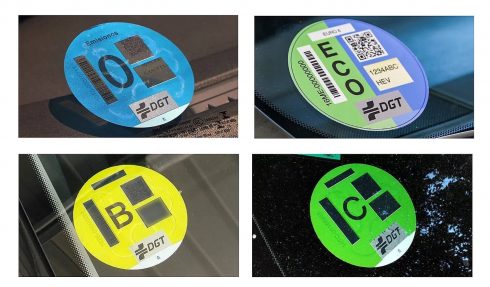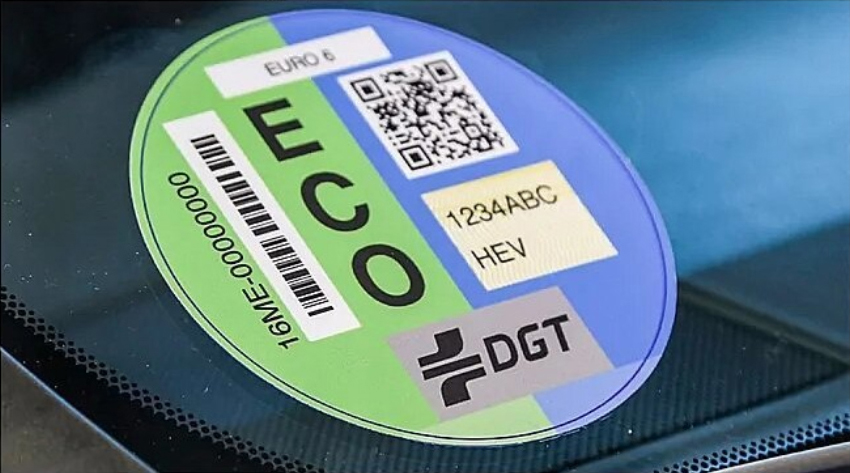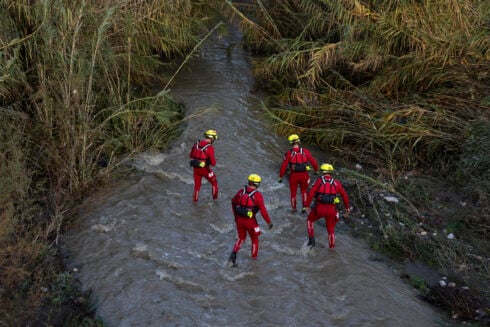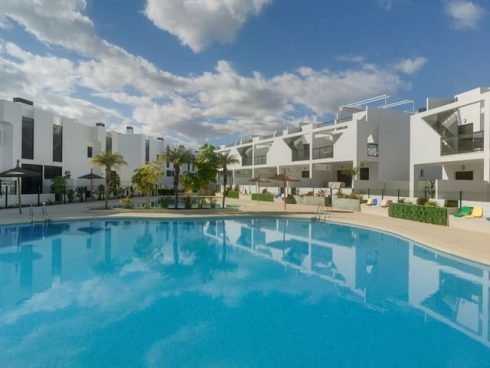WITH the rollout of Spain’s new “green” initiative, designed to reduce C02 emissions in our cities by restricting the most polluting vehicles, motorists are being taken by surprise. Even though the scheme was approved by the government in 2021, it is only just coming to public attention. It affects seven out of 10 cities – 149 throughout Spain.
Surprised residents might suddenly learn, from friends in the bar, that their older cars won’t be welcome in the nearest city from the end of 2023. They’ll have to find an alternative – such as the tram or bus.
If this is news to you, it’s because the incoming “low emission zones” (LEZ), also known as zona bajas emisiones (ZBE) and “zero emission zones” (ZEZ) have received minimal publicity – possibly because it is a proverbial “hot potato”. It will cause motoring chaos, with 75% of vehicles affected.
What is the plan?
In short, the idea is to categorise all Spanish-plated vehicles with stickers, according to their pollution level. The sticker will determine whether your car is allowed into the LEZs and ZEZs. These zones will be created in cities with over 50,000 inhabitants. In some cases, it’s cities with 20,000 inhabitants. Town halls have until the end of 2023 to delimit and enforce these zones, or they will be fined.
You can see what (if any) sticker your car will gain on the DGT website.
One of the many bugbears (for motorists) is that diesel vehicles registered before 2006 aren’t allowed a sticker. Drivers of everything from ‘turismos’ to vans and live-in vehicles will be affected, and without much warning.
Some limited emission zones already exist, so the concept isn’t new in Spain.
Barcelona and Madrid
Since 2021, drivers entering a massive 95km2 LEZ in in Barcelona, between the peak hours of 7am and 8pm, have been obliged to display a distintivo ambiental (environmental sticker) on their windscreen.
Madrid introduced its ZEZ in late 2018, which is 20 times smaller than Barcelona’s LEZ, but has stronger restrictions. Vehicles without the distintivo ambiental sticker cannot enter. Those displaying 0 and ECO stickers can park for free, while drivers of C and B vehicles have special rules. Residents with C and B must register to park in the zone. They can receive visitors and suppliers up to 20 times a month – provided these drivers also have C or B stickers. Motorcycles with C and B can’t enter between 10pm and 7am.
If you’re driving through Spain, be aware that the M-30 motorway is included in a Madrid ZEZ. The fine for non-compliance is 200 euros.
Seville, Valencia, and Valladolid also have LEZs. Before long, they will be joined by many other Spanish cities.
What are the classes of sticker?
The stickers currently come in four valid categories: Zero, ECO, C and B. Category A means no sticker: you’re not entering the zone. Those with a B sticker can enter, but not park there. Some drivers have complained that the DGT website says they can have B, but they receive C in the post.
Motorists who drive into restricted zones without the correct sticker will be sent a 200e ‘multa’, reduced to 100e if paid within 20 days. According to some reports, the driver might be obliged to check for ‘multas’ on the DGT app or website, rather than the traditional system of sending them by signed-for post.
The scheme has a few exemptions. These apply to vehicles registered to people with mobility problems, health issues that mean they can’t catch public transport, emergency services and essential services. Foreign vehicles don’t need a sticker. Does this create temptation to drive around in UK-plated cars?
Social media storm
The scheme is already causing controversy on social media. A clear problem is the cost of replacing older vehicles. We’re having a cost-of-living crisis, with electricity and food at inflated prices. It’s hardly the best moment to ask Spanish residents to buy new cars. Most people can’t afford a hybrid or electric vehicle, or to lease a new car for 300e-plus per month.
To add insult to injury, older vehicles that are in category A (no sticker), will become devalued and difficult to sell. Motorists realistically needed more warning, and some will have bought older vehicles during the last year (like me) without realising there’s a problem.
Even the most ardent of environmentalists might moan when they can’t enter city centres, or they must dig deep for a new car.
Meanwhile, follow the money. Certain organisations will benefit from the latest “green” initiative – namely, car manufacturers, leasing companies, finance companies and the DGT, with endless penalty fines to collect.
Rural Spain – the case of Granada
The scheme is particularly bad for people with limited income, who can’t afford to change vehicle, or those who travel between city and ‘campo’ (countryside), where older types fare better.
In the rural Alpujarra, many motorists have chosen older models, because of the harsh driving conditions. Mountain tracks, bumpy access roads and messy loas don’t bode well for anything too new and shiny. These motorists now face a sticker dilemma. The obvious answer, for many, is don’t bother visiting Motril, Granada or Malaga.
Take, for example, the city of Granada itself. Although it has an existing tram system and bus routes, these are insufficient for a park and ride scheme to transport thousands of displaced visitors daily. Where is the infrastructure and investment, ahead of creating the delimited zones?
“Get a bus,” flipped a non-car owner on a Facebook group. What if you have a dog? A heavy item to transport? The bus doesn’t always cut the mustard – or come on time.
If public transport is a big turn-off, people won’t travel. This could be fatal for businesses based within the exclusion zones, that rely on customers loading goods into vehicles.
An illogical result
In my own case, the new rules prove particularly ironic. My 2002 Citroen Berlingo, bought in March 2022 for its fuel economy during the Ukrainian war-driven price crisis, has a diesel engine. It can’t get a sticker – even though it passes its ITV emissions test with flying colours and does 48mpg. It was bought to cope with the mountain and motorway, as well as dogs, teens, and various loads. Now, it needs to be changed for a newer one.
In contrast, my 2006 Mitsubishi L200 pickup – a fuel-guzzling monster – scrapes through the DGT system with category B. It does maybe 30mpg, making it a poor choice for driving to the city. With the nature of a tank, it’s awkward to manoeuvre in built up areas.
Thousands of people are in the same boat. Says a resident of Orgiva who just bought a Nissan Qashqai: “That’s the first I’ve heard of this scheme. I wondered why my new car had a sticker saying ‘B’ on its windscreen!”
With this level of public knowledge, Spain is driving into problems.

THE STICKERS EXPLAINED:
More information can be found here, on the N332 advice site.
Without sticker
Gasoline before 2001 or that don’t comply with the Euro III standard. All diesel before 2006 or that don’t comply with Euro IV.
B
All gasoline registered as of January 1, 2001, or that comply with Euro III. Al diesels registered from January 1, 2006, or that comply with Euro IV and V.
C
All gasoline registered after January 1, 2006, or that comply with Euro IV, Euro V or Euro VI. All diesels registered after September 1, 2015, or that comply with Euro VI.
ECO
All hybrid or plug-in hybrid vehicles with an electric range of less than 40 kilometres. All vehicles powered by natural gas, compressed natural gas (CNG) or liquefied petroleum gas (LPG) and that additionally meet the requirements of C.
Zero ‘0’
All electrified vehicles with an electric range of more than 40 kilometers, including pure electric, plug-in hybrids or extended range electric vehicles. All vehicles powered by hydrogen or fuel cell.
READ MORE
City centre restrictions to cut high-polluting cars start next year in Spain
Barcelona combats rising pollution levels with 37.8m euro plan to rid city of cars
Click here to read more Other News from The Olive Press.








